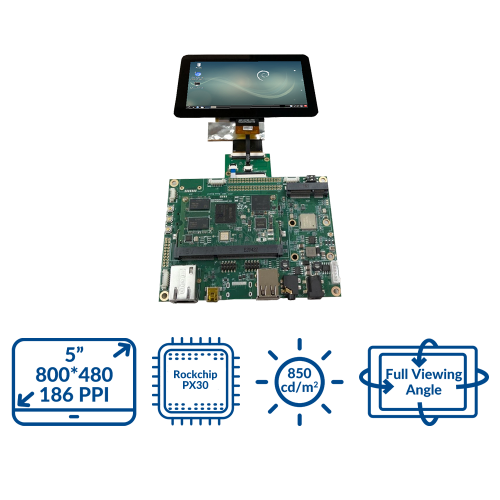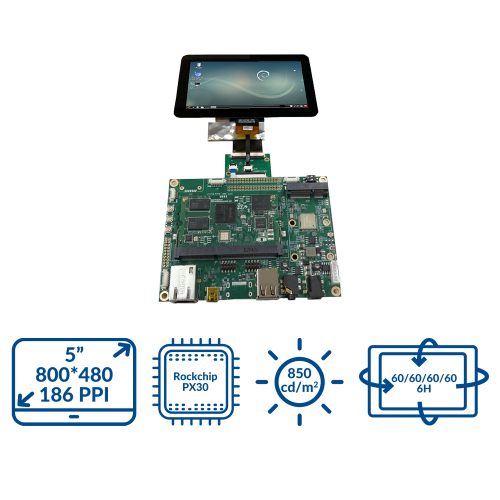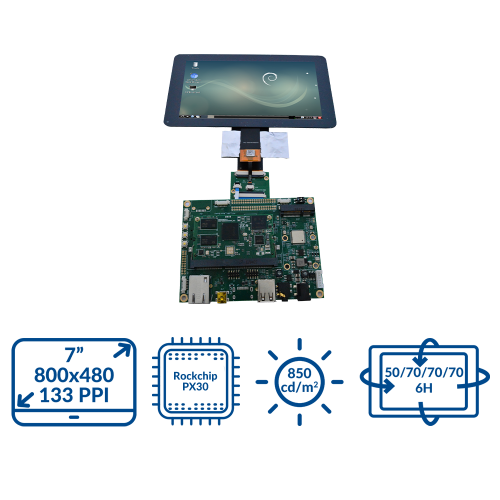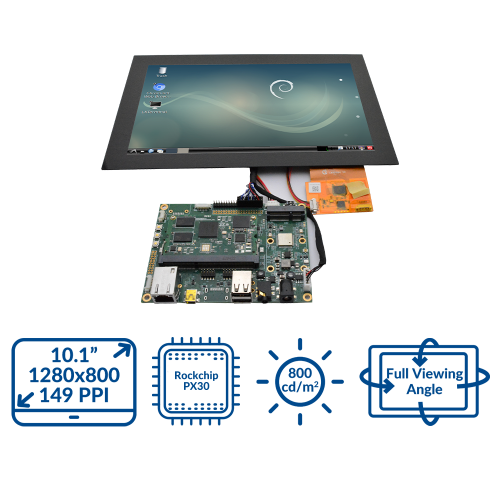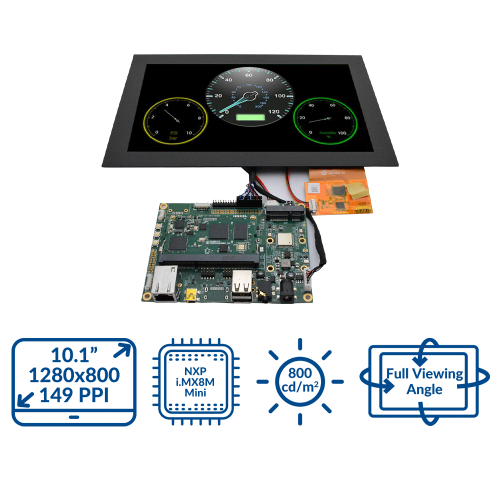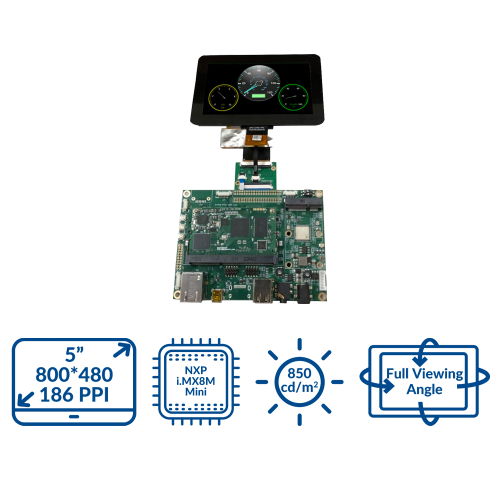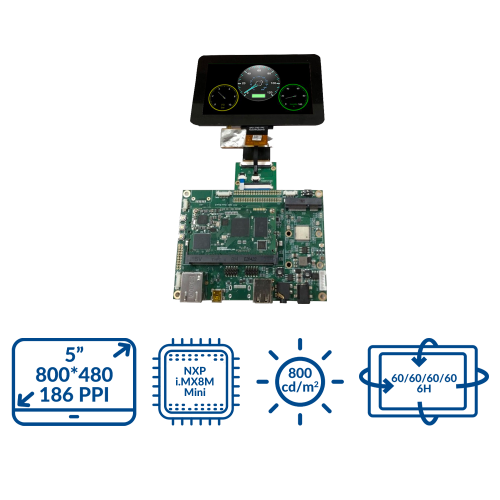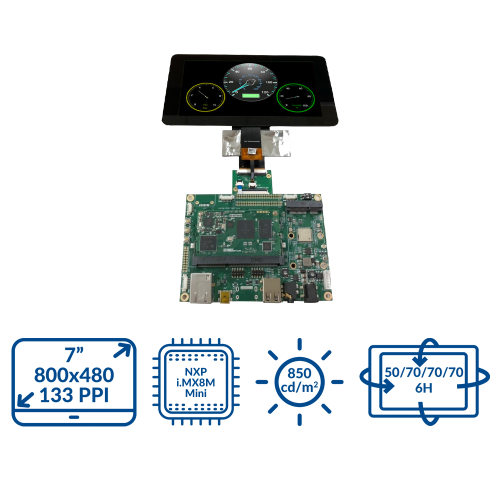MPU
Contact UsIn today’s digital age, the demand for high quality displays in embedded systems is on the rise, and having a reliable, feature-rich LCD display solution can make all the difference. Linux/Android solutions are emerging as the go-to choice for developers and manufacturers seeking to enhance user experience.
Inelco Hunter’s MPU embedded display range supports popular operating systems, reduces development time, and achieves the scalability of your project. Our engineering team is available to support your customisation needs.
Multimedia Support: Enjoy multimedia capabilities, such as Full-HD video playback, audio processing, and image rendering, to enhance the user experience.
Scalable UI: Design user interfaces that adapt to various screen sizes and resolutions, ensuring a consistent user experience across different devices.
GPU Acceleration: Utilise hardware acceleration and graphics libraries to achieve smooth 2D/3D animations, transitions, and high-quality graphics rendering.
Rich Ecosystem: The Linux ecosystem offers a wide range of open-source libraries, tools, and applications that can be leveraged to build feature-rich and visually appealing user interfaces. This means you can incorporate advanced graphics, touch interfaces, and connectivity options seamlessly.
Multiple Connectivity: Rich connectivity like UART, I2C, SPI, Ethernet, Wi-Fi, Bluetooth, etc. Compared to a traditional industrial PC, it is much more cost effective and fully customisable, with lower power consumption .
Frequently Asked Questions
What LCD screen sizes and resolutions does IHL’s MPU embedded display offer?
MPU embedded display range covers 5” to 10.1” with resolution up to 1280×800. We can customize the LCD based on your requirements.
Hacker board modules are cheap and powerful; why should I select MPU embedded display ?
Our embedded solutions are designed and engineered for commercial and industrial applications use. They are fully customizable based on your project requirements.
| Embedded Solution | Hacker board/PI-like module | |
| Longevity and End of Life | – Proven track record for longevity support to customer |
– No Longevity guarantees. – May EOL or Global shortage suddenly |
| Software support | – Mature product and professional S/W support | – Updated by community contributors. |
| Local support | – Local UK engineer support |
– Community support – Third-party charge support |
| Flexibility |
– System on module flexibility – Provide customization options |
– limited flexibility and standard products are the mainstream |
| Temperature grades |
– Commercial: -0 to 70 °C – Extended: -20 to 70 °C |
– Pi 4: 0 to 50 °C |
| Pin to pin compatibility | – MPU series offer pin-to-pin compatibility for SOM upgrade | – No pin-to-pin option |
What is the brightness of the LCD that IHL’s MPU embedded display offers?
All standard products offer 800+ nits. We can customize the LCD brightness based on your requirements.
What is the maximum display resolution that MPU embedded display can support?
1920×1080
What O/S does the MPU embedded display support?
Support Android, Ubuntu, Debian Linux, Yocto. Depending on the product, some free pre-built images are available.
Any RAM or Flash ROM options for MPU embedded display?
MPU embedded display modules come with 2G RAM and 8GB eMMC Flash. If it does not meet your application requirements, we can customize the module based on your RAM/Flash ROM requirements.
What kind of boot options does the MPU embedded display support?
You can boot from the on-board EMMC flash ROM or microSD card.
If I want to start the application development on MPU display module, what tools or S/W do I need?
You need below tools and S/W:
- One 12V power supply
- One PC or notebook with USB connection and Putty installed (or equivalent SSH/serial shell).
- One USB-serial adaptor/cable
Connect the USB-serial adaptor/cable to the USB port of your PC and the debug port (J25) of the display module. Start the serial shell (Putty or equivalent) and power up the display module, you will see the debug message. After the bootup procedure is completed, you can start your OS configuration and application development.

